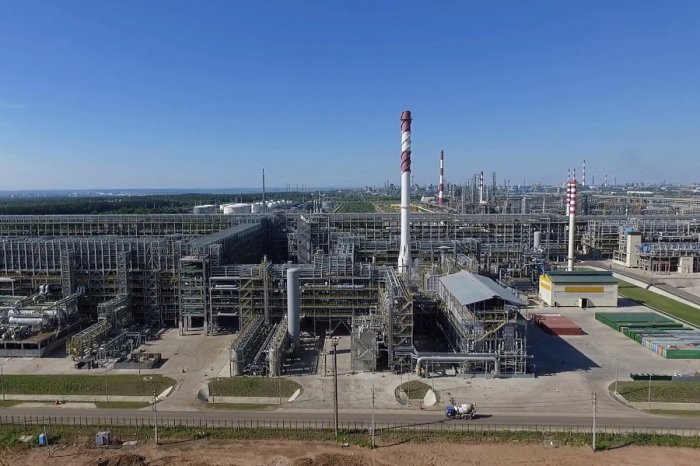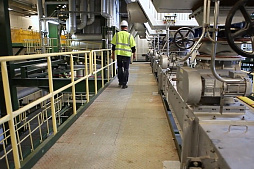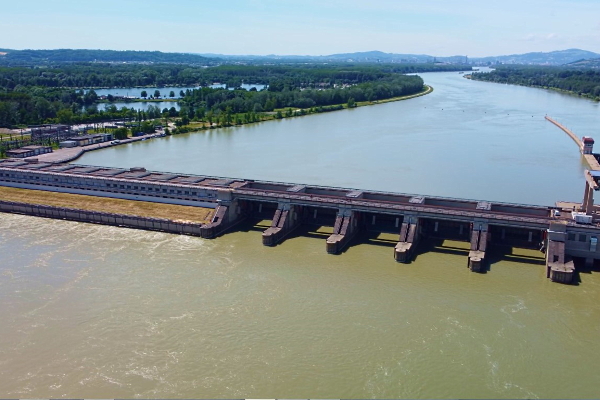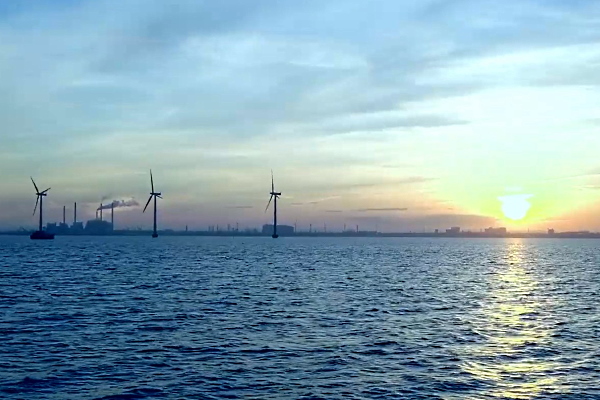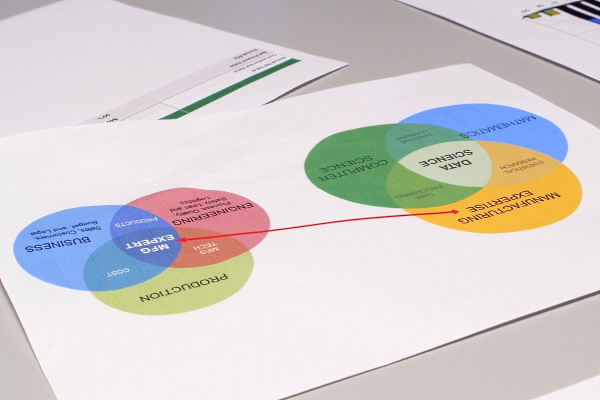To consider an application for financing, fill out the form and send it to us by e-mail along with the project brief, or contact our experts
In addition, leasing schemes in project finance can reduce the risk of financial losses during the development of new projects and, to a certain extent, simplify the process of obtaining loans.
As a result, the business is expanding opportunities for its modernization and expansion in many areas.
In other words, lease financing serves as an important tool for upgrading the industrial potential of enterprises and increasing the efficiency of investments and innovation.
According to the classical definition, “leasing” refers to the transfer by the lessor to the lessee for a certain period of time of assets that are the property of the lessor or were acquired by him on behalf and in agreement with the lessee from the relevant seller (manufacturer).
This mechanism involves the payment of transferred assets by the lessee in the form of periodic lease payments and often provides for the possibility of purchasing assets after the expiration of the agreement.
Although the object of lease can be almost any asset used in the production cycle, experts note some limitations, depending on the national legislation and other circumstances. In some countries, land plots and other natural objects cannot be leased. Depending on the type of asset, there are leasing of movable assets and leasing of real estate.
A special category in this context is finance lease, which is widely used in project finance (it will be described in detail below).
The following assets can be transferred under a lease agreement:
• Vehicles including trucks, ships and freight cars.
• Construction machinery including heavy equipment for drilling and other work.
• Agricultural machinery, tractors, combine harvesters and equipment of all types.
• Pipelines, roads, overpasses, substations and power lines.
• Digital communications and electronic equipment.
• Machine tools and other production equipment.
• Commercial and industrial buildings.
Given the legislative complexity and numerous market barriers, the organizers of project finance (PF) schemes have to make a lot of efforts to effectively organize lease financing of large projects.
The key to success should be a rational contractual structure of the lease agreement, which protects the interests of all project participants.
Lease participants and their interests
Among the classic participants in this type of relationship are the manufacturer / seller of equipment, lessor and lessee.It should be understood that the lessor and the lessee are direct parties to the lease agreement. They may be represented by individuals, financial institutions (banks), manufacturers, suppliers, and organizations operating in the leasing field.
Table: direct and indirect participants in leasing schemes.
| Participants | Companies and organizations |
| Lessee | Individuals, SMEs, cooperatives and large companies implementing capital-intensive projects of all types |
| Lessor | Subsidiary companies of large banks, industry leasing companies, leasing structures of trading companies and other entities |
| Manufacturer | Local and foreign equipment manufacturers, as well as their distributors and representatives in different countries |
| Indirect participants | Collective investment institutions, insurance companies, financial consulting companies, investment banks and financial intermediaries of various types. |
The lessor is a legal entity that acquires expensive assets from the manufacturer (seller) and transfers it to the lessee in accordance with the terms of the lease agreement.
The functions of a lessor are usually performed by specialized companies. Banks, other financial institutions and manufacturers (machine-building plants, construction firms, and others) can also be lessors.
The benefits of lease financing for the lessor are listed below:
• Acceleration of business development
• Promoting the marketing of innovative products.
• Simplify the sale of used equipment.
• Obtaining significant income after the sale of assets at a high salvage value using accelerated depreciation schemes.
• Promoting the maximum use of productive resources.
• Reducing the risk of customer insolvency.
• An additional source of profit for companies.
• Tax incentives and so on.
The lessee is a legal entity that receives assets for temporary use under a lease agreement.
From the point of view of the lessee, the economic benefits of leasing operations can be divided into four groups, which are listed below.
Lease financing in project finance provides the lessee with the following advantages:
• An available source of resources for the renewal of fixed assets.
• Reducing the company's need for initial equity capital.
• Diversification of sources of financing for capital-intensive projects.
• Minimize the use of internal business resources.
• Flexible schedule for paying the cost of assets.
An important place in this list is given to tax incentives. In some countries, lessors may “pass on” depreciation tax credits to lessees.
In addition, lease payments are usually charged to the company's gross expenses, which reduces the tax base.
A manufacturer or seller is a legal entity acting as the owner of the property selected by the lessee, which enters into an agreement for the sale of a specific asset. This function in the leasing market is most often performed by manufacturers, but this role can also be played by large firms engaged in wholesale trade in machinery and equipment (including international companies).
Any legal entity operating legally and whose activities do not contradict international and national standards, including the requirements of the UNDROIT Convention on International Financial Leasing (Ottawa), can act as a manufacturer or seller of leasing objects.
It may be one of the many international suppliers of industrial equipment, vehicles, agricultural machinery and technology.
Most of the leasing companies at present are affiliated banking structures and companies actually created by industrial organizations to promote their products around the world. Commercial leasing companies created by banks, as well as specialized divisions of commercial banks, are the most powerful group of leasing companies active in developing countries.
They provide leasing services to a wide range of customers, but in some cases the bank prefers to serve a limited circle of regular customers. In the practice of many countries, it is accepted that commercial banks not only finance the activities of leasing companies, but also recommend their clients to be serviced by a certain leasing company.
Obviously, such companies, which are part of the structure of large commercial banks, have a high potential, a significant range of clients and a high position in the leasing market.
Indirect participants in the lease financing of large projects include the following entities:
• Reputable insurance companies that protect the property and financial interests of lessors, lessees and manufacturers.
• Joint investment institutions that accumulate significant financial resources for the purpose of further investment in promising leasing projects.
• Investment banks lending to the lessor and acting as guarantors of the safe implementation of large leasing operations.
• Consulting companies that help the lessee to receive high-quality consulting services and learn more information about the leasing market.
In order to support financial and business activity at a certain level, government bodies are also actively involved in leasing, regulating the leasing business, creating conditions for increasing the interest and initiative of all subjects in organizing and implementing important projects.
Finance lease in project finance schemes
Although leasing has various features, below we will focus only on those that are related to the financing of large investment projects.It is necessary to dwell in more detail on finance lease and leverage leasing. In the context of project finance, finance lease plays a vital role in financing investment projects, such as power plants, factories, infrastructure, etc.
Finance lease agreements are agreements that provide for the payment, within a clearly defined base period, of lease payments that are sufficient to fully reimburse the lessor's costs associated with the acquisition of property, as well as to earn an adequate profit.
Finance lease (capital lease) is the acquisition of assets for the purpose of their subsequent transfer for temporary use for a period approaching the period of its operation and depreciation of all or most of the value of these assets. During the term of the agreement, the lessor recovers the entire value of the assets through lease payments and receives an adequate profit, and the lessee acquires ownership rights at the end of the lease agreement.
The main features characterizing finance lease:
• The lessor initially acquires the asset not for its own use, but specifically for leasing it.
• The client has the full right to choose the leasing assets and the seller company.
• The seller of the assets knows that the asset (equipment) is being purchased for leasing.
• The asset is directly delivered to the customer and put into operation.
• The object of leasing is taken on the balance sheet of the company-lessee.
• Claims for the quality of assets and a request for the correction of defects during the warranty period, the lessee sends directly to the seller.
• The risk of loss and damage to the asset passes to the lessee after signing the Transfer-Acceptance Act of leasing assets.
It is an important mechanism within project finance schemes.
Large companies using finance lease can carry out large investment projects in order to expand existing production facilities by purchasing fixed assets. SMEs and young companies, including those at the development stage, can use leasing leverage to implement capital-intensive investment projects to acquire assets that are not available to them through bank loans or other sources of funds.
The large-scale modernization of companies and the development of large projects with a long payback period require businesses to look for new approaches to increase the scale and timing of financing and reduce the cost of attracted financial resources.
This can be achieved using leverage leasing, which is considered one of the most complex lease financing schemes.
This scheme best meets the needs of project finance.
For example, investment projects for the purchase of equipment for hydropower plants (turbines) or the construction of oil platforms in the ocean. It is clear that at the end of the term of the agreement, such assets cannot be dismantled by lessees and returned to the lessor, so clients will have to buy such assets from the owners.
Leverage leasing requires a clear coordination of the actions of a significant number of participants in the framework of large-scale investment projects with an implementation period of 20-25 years or more. The complexity of leverage leasing is explained by the fact that a significant number of participants participate in this operation, among which there may be several owners, shareholders, creditors and sellers.
The group of co-investors of the project on the part of the lessor may be the shareholders of a special company (lessor) that directly enters into a lease agreement.
Such participants finance a certain part of the funds necessary for the purchase of assets. They use a limited amount of their own funds, typically around 20% of the initial asset value. Funds are usually raised through the issuance and placement of securities. The main part of the funds (about 80%) for the acquisition of assets is attracted by a group of creditors, which usually consists of commercial banks. In the scheme above, the leverage ratio is 4.
Leveraged leasing transactions involving multiple parties typically involve two representatives. One of them coordinates actions and represents the interests of banks. In turn, the representative of the lessor manages the actions of another group of participants (the management company).
Such a company acts in the person of the lessor, concludes a lease agreement, signs agreements for the sale of assets for leasing, a loan agreement and an insurance contract. Also, this company distributes the profit from the leasing project among the shareholders.
Here the similarity between leveraged leasing and project finance becomes apparent.
The use of leasing to finance a complex investment project gives the lessor the right, with insignificant own participation, to use tax and other benefits or preferences that apply to participants in finance lease, for example, accelerated depreciation. These benefits can reduce the amount of lease payments and provide savings to project participants compared to investment loans.
A typical leverage leasing model looks like a combination of a number of elements:
• A contract for the sale and purchase of an asset at the expense of the lessor's own capital or funds received as a result of syndicated lending with limited recourse to the borrower.
• A lease agreement drawn up and signed on the terms and conditions detailed above.
• Assignment of receivables for lease payments due to repayment of debt on principal and interest.
Thanks to leverage leasing, the number of investment financial products is growing, which contributes to competition between various sources of financing and the expansion of financial opportunities for the implementation of investment projects in the most beneficial mode for participants.
The similarity of leverage leasing with syndicated lending, as world experience shows, can become a powerful "long" investment resource, involving the use of a complex and flexible contractual structure between participants. This scheme also increases the lessor's interest in the lessee's business.
Choosing leasing to finance large projects
Considering leasing in the structure of project financing sources, it is important for the lessor to conduct a thorough comparative analysis of leasing and loan financing schemes.If the analysis shows that financing through leasing will have significant advantages, then the company can make a final decision and start preparing an investment project based on leasing.
An important place in the process of evaluating a leasing project is given to its financial evaluation, the algorithm of which is similar to the financial evaluation of any investment project. In the process of preparing and analyzing a leasing project, experts recommend strictly following the sequence and procedures for financial evaluation, as shown below.
Stages of choosing lease financing in project finance:
1. Selection and formation of information base for financial evaluation.
2. Detailed analysis of the lessee's capital structure, solvency and liquidity of its assets.
3. Selection and analysis of qualitative criteria of the lessee's business activity
4. Planning and calculation of lease payments in the structure of the lease agreement.
5. Analysis of the financial efficiency of the leasing project.
Particular attention is paid to the stage of calculating lease payments, since the possibility of participation of the lessee and the lessor in the organization of leasing largely depends on the correct determination of the total amount of payments and their schedule.
The objective basis for determining the payment for the lease of assets is the structure of the lease payment, which is multicomponent in nature. Its mandatory components include depreciation deductions, payment for borrowed resources used by the lessor, lessor's profit, compensation for insurance payments under the lease object insurance contract (if the asset is insured) and other expenses stipulated by the lease agreement.
At the stage of analyzing the financial efficiency of a leasing project, general methods for evaluating the effectiveness of investment projects are used, taking into account the characteristic features of leasing and the specifics of a particular project.
A thorough analysis of the financial efficiency of a leasing project provides grounds for its successful implementation.
If you need help financing investment projects, please contact Link Bridge Financial LTDA LBFL at any time.
Our company provides a full range of services in the field of project finance, financial modeling, investment engineering and investment consulting for businesses in Europe, the USA, Latin America, North Africa, East Asia and other regions of the world.




